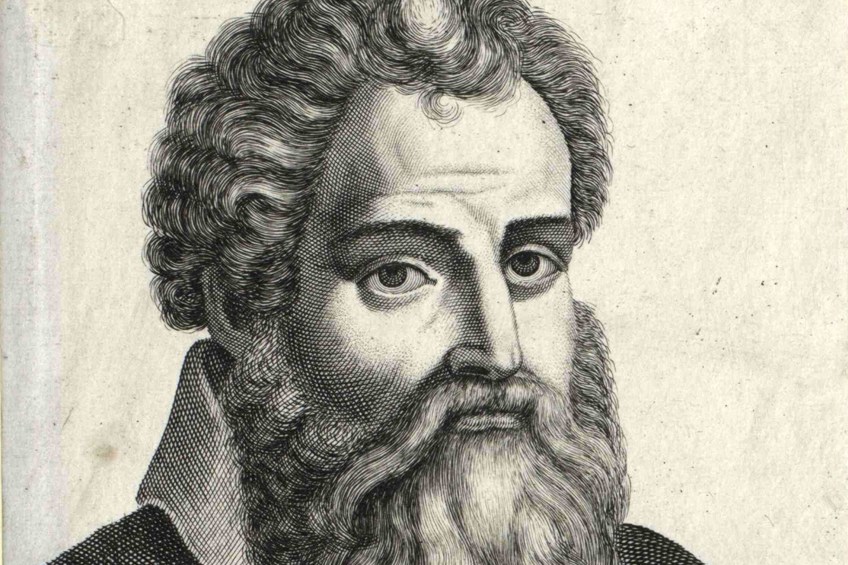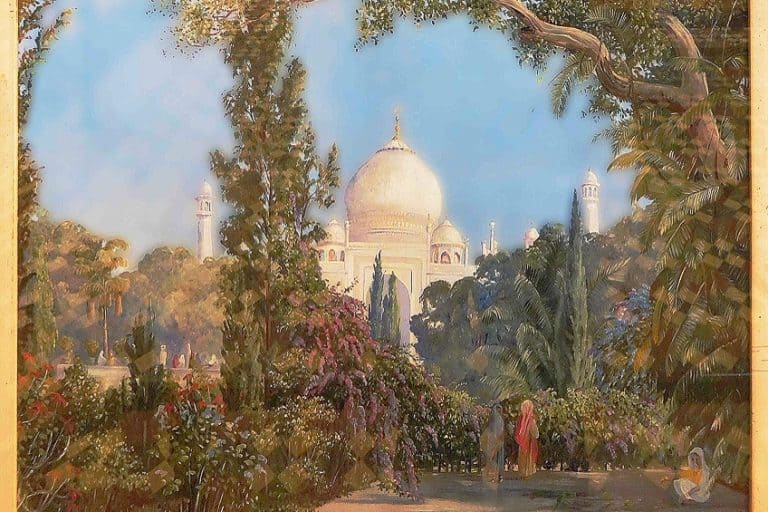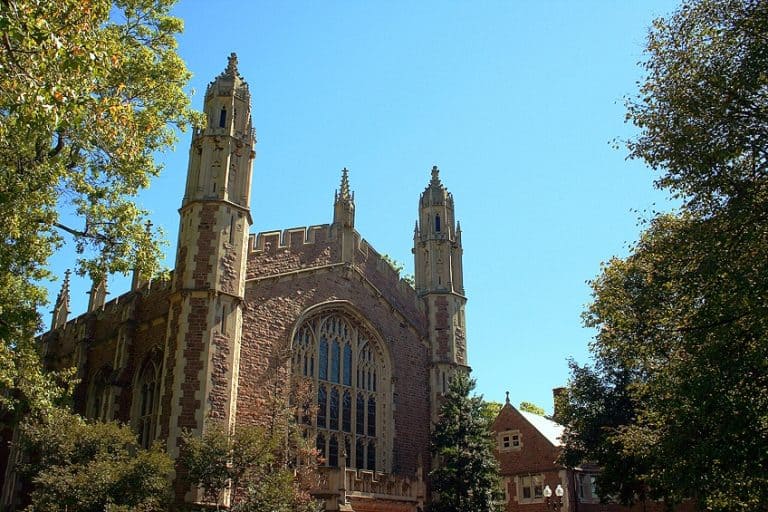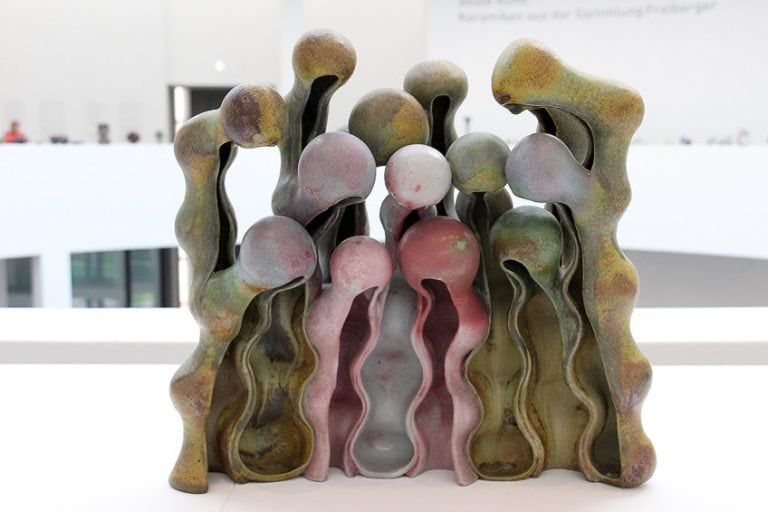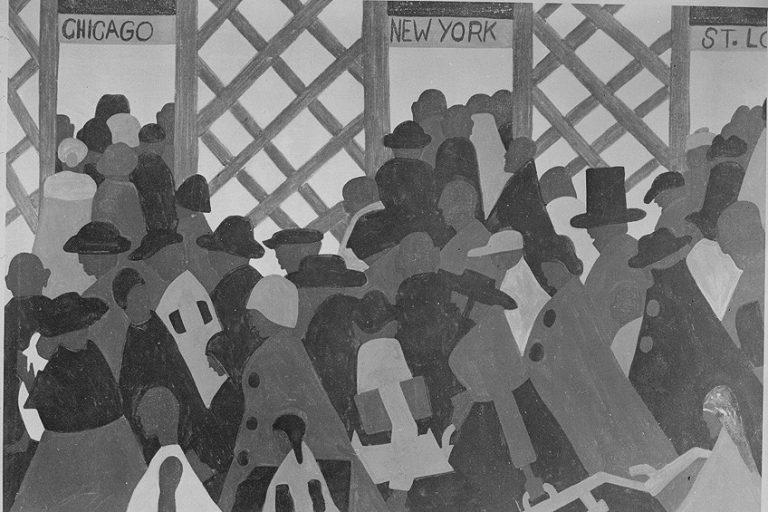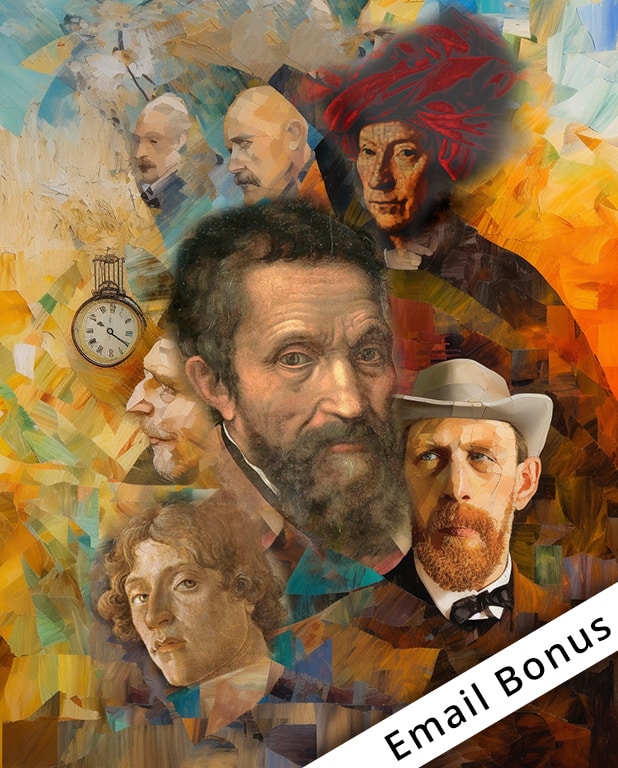Giorgio Vasari – Taking a Look at the Master of Tuscan Painting
Giorgio Vasari was an Italian painter and architect who rose to fame during the Renaissance. A man of many talents, Vasari was also a writer. His renowned novel The Lives of the Most Eminent Sculptors, Painters, and Architects (1550) earned him the title “The Father of Art History”.
Artist in Context: Who Was Giorgio Vasari?
Giorgio Vasari was a painter, architect, and writer during the Late Renaissance period. He achieved many great things as an artist and his contributions to the art world are undeniable. In this section, we will look at the life and career of one of the most influential men of the 16th century.
| Date of Birth | 30 July 1511 |
| Date of Death | 27 June 1574 |
| Country of Birth | Italy |
| Art Movements | Late Renaissance, Mannerism |
| Genre/Style | Portraits, History Painting |
| Mediums Used | Painting, Architecture, Writing |
| Dominant Themes | Biblical Depictions, Classical Mythology, Allegories
|
The Birth and Early Life of Giorgio Vasari
Giorgio di Antonio Vasari was born on 30 July 1511 in the town of Arezzo in Tuscany, Italy. He came from a family of potters, painters, and craftsmen. At this time, the rich and powerful Medici family essentially ran most of Tuscany. They were huge supporters of the arts, and thus, one could become quite wealthy as an artist under their patronage.
Due to the fact that many of the Vasari family were artists, Giorgio Vasari grew up in a privileged home.
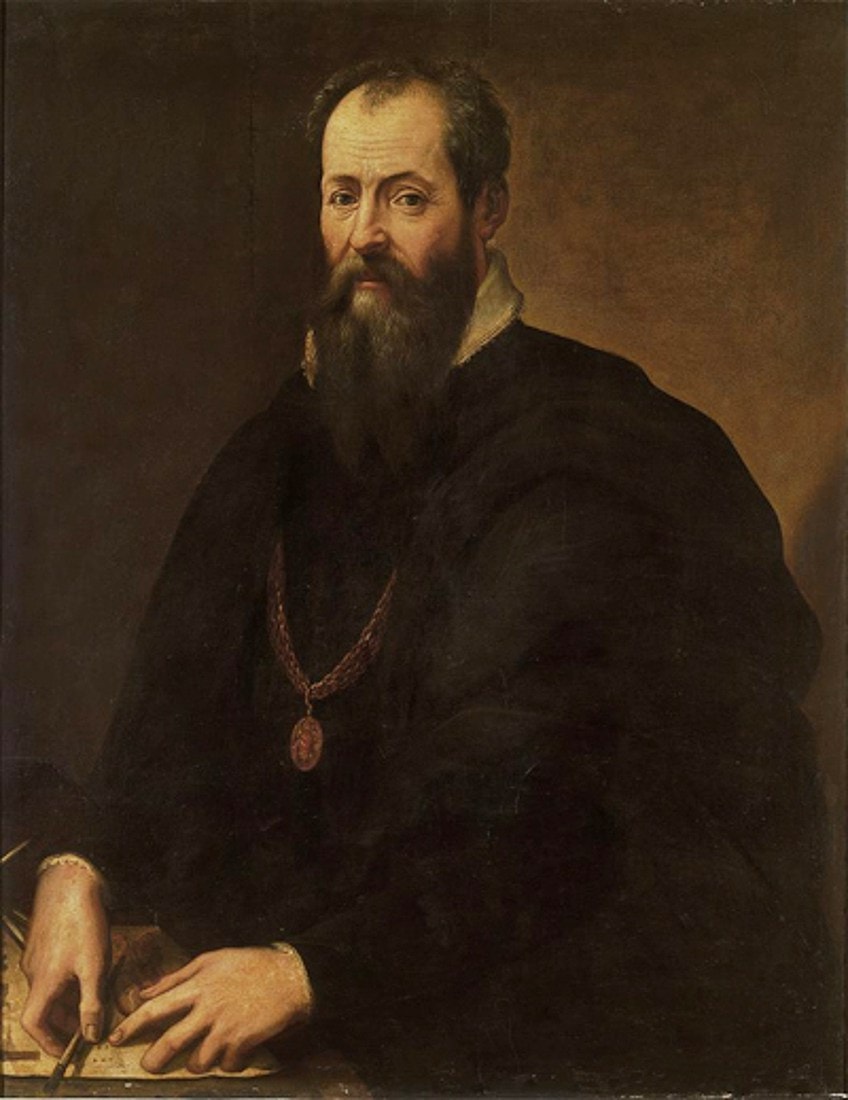
Vasari received a very thorough education at a school in Arezzo. He was taught Latin and Classical studies, as well as drawing. Vasari was a rather sickly child, and thus spent most of his time reading and drawing rather than engaging in games with his five siblings and the other children his age.
Because of this, friends and family members took note of the raw talent he exhibited from an early age. One of the people that noticed Vasari’s undeveloped talent was his uncle Luca Signorelli. Signorelli was a reputable artist and draftsman himself. He organized for Vasai to be taught drawing and painting by Gugliemo da Marsiglia, a famous stained-glass painter.
Thus, Vasari learned all the basics of art early in life.
When Vasari was 16 years old, Silvio Passerini the Cardinal of Cortona visited his school. Vasari stood out to the Cardinal due to his impressive recitation of Virgil’s Aeneid (c. 19 BCE). The Cardinal was also moved by Vasari’s artistic abilities. Thus, in conjunction with the Medici family, he agreed to pay for Vasari to study art in Florence.
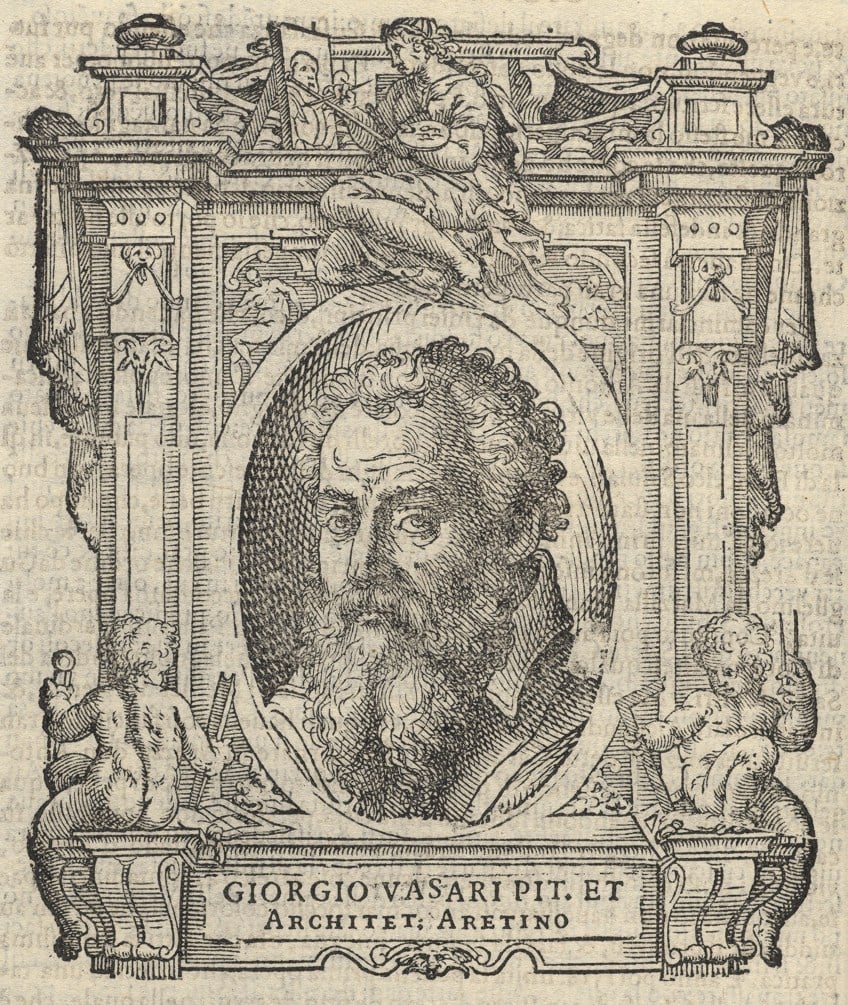
Education and Career
This section of Giorgio Vasari’s biography will focus on his artistic education and career. Thanks to his relations with the Medici family, Vasari was never considered a “starving artist”. He was given regular commissions which allowed him to live comfortably and develop his reputation as an artist.
This also gave him the freedom to pursue a number of ventures, such as writing and architecture.
Studies and Apprenticeships
Upon arriving in Florence, Giorgio Vasari studied literature with the Medici children, as well as trained in Michelangelo’s workshop for a short time. It was here that his loyalty and admiration for Michelangelo began. The polymath would remain a major source of inspiration to Vasari throughout his career. The two developed a good relationship during Vasari’s time in the workshop and Michelangelo arranged his apprenticeship with Andrea del Sarto.
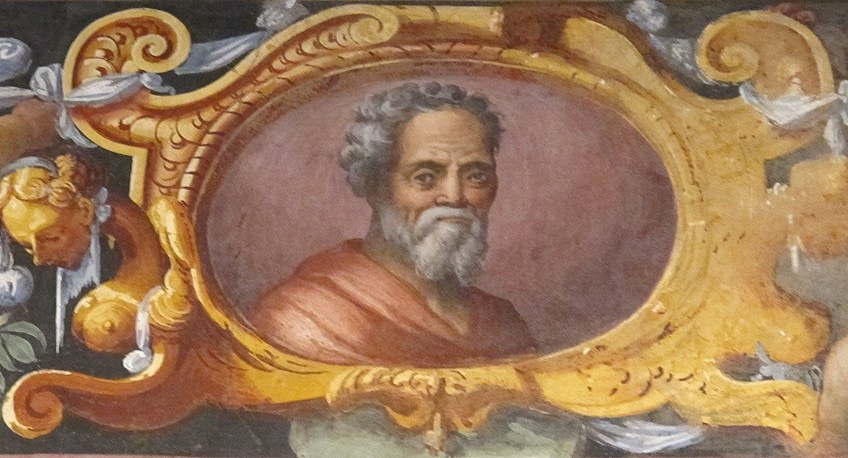
After studying under Del Sarto, Vasari entered the workshop of the famous sculptor Baccio Bandinelli. The two were not compatible and bashed heads constantly. Bandinelli was also a rival of Michelangelo’s. As an avid fan of the latter, this too would have made Vasari biased against Bandinelli. He later expressed his hatred for Bandinelli by painting him in a very unflattering light in his book The Lives of the Most Eminent Sculptors, Painters, and Architects (1550).
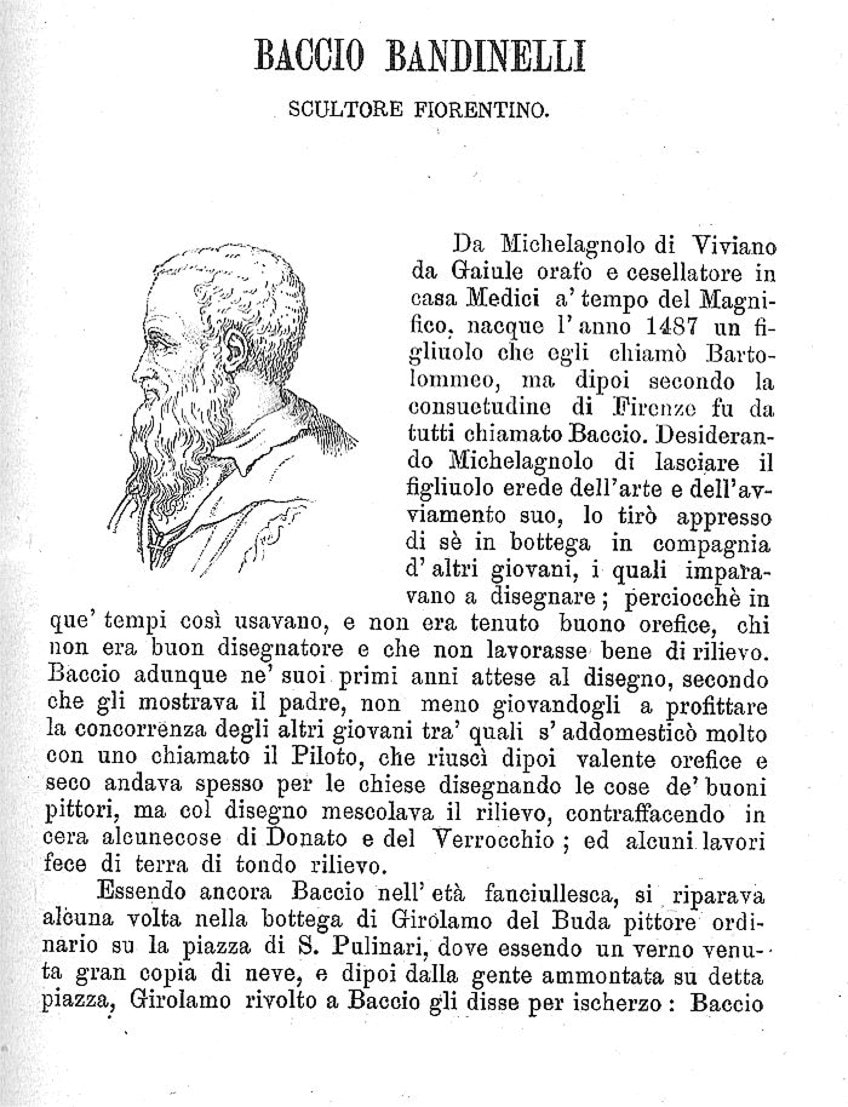
In 1531, Vasari was invited by his friend and schoolmate Ippolito de’Medici to join the family in Rome. Here, he spent his time studying the works of the Old Masters in the Vatican and sketching the Roman ruins. He received a constant supply of commissions from the Medici family, which he completed tirelessly.
His hard work and loyalty to the Medici family meant that he was a rich man by the age of 25.
The Lives of the Most Eminent Sculptors, Painters, and Architects (1550)
In 1550, Vasari released his famous book Le Vite de’ più eccellenti pittori, scultori, e architettori, also known as The Lives of the Most Eminent Sculptors, Painters, and Architects. The book gave detailed biographies of famous Renaissance artists, with an emphasis on Florentine art. However, he was criticized for laying too much importance on Tuscan painting. Thus, in 1568, he released a second volume of The Lives, which included the works of prominent artists from Venice, such as Titian.
“The Lives” is now one of the most widely read pieces of literature about art. It was the start of the field of art history as we know it today.

Shortly after the first edition of The Lives was published, Vasari became the center of a scandal. Vasari was not very a very well-liked character due to his perceived arrogance and petulance. Thus, when rumors arose that he was being careless with his money and drinking too much many believed them. His drinking habits led them to question whether The Lives was actually a credible source.
Thus, he decided that his only option was to settle down and marry.
Vasari was wed to Nicolosa Bacci, the daughter of a highly regarded apothecary from his hometown. Vasari had previously engaged in a surreptitious relationship with her sister Maddelena, which resulted in the birth of two bastard children. It was shortly after her death that he married Nicolosa. Many saw this as overtly strategic, although the two were said to have a loving relationship.
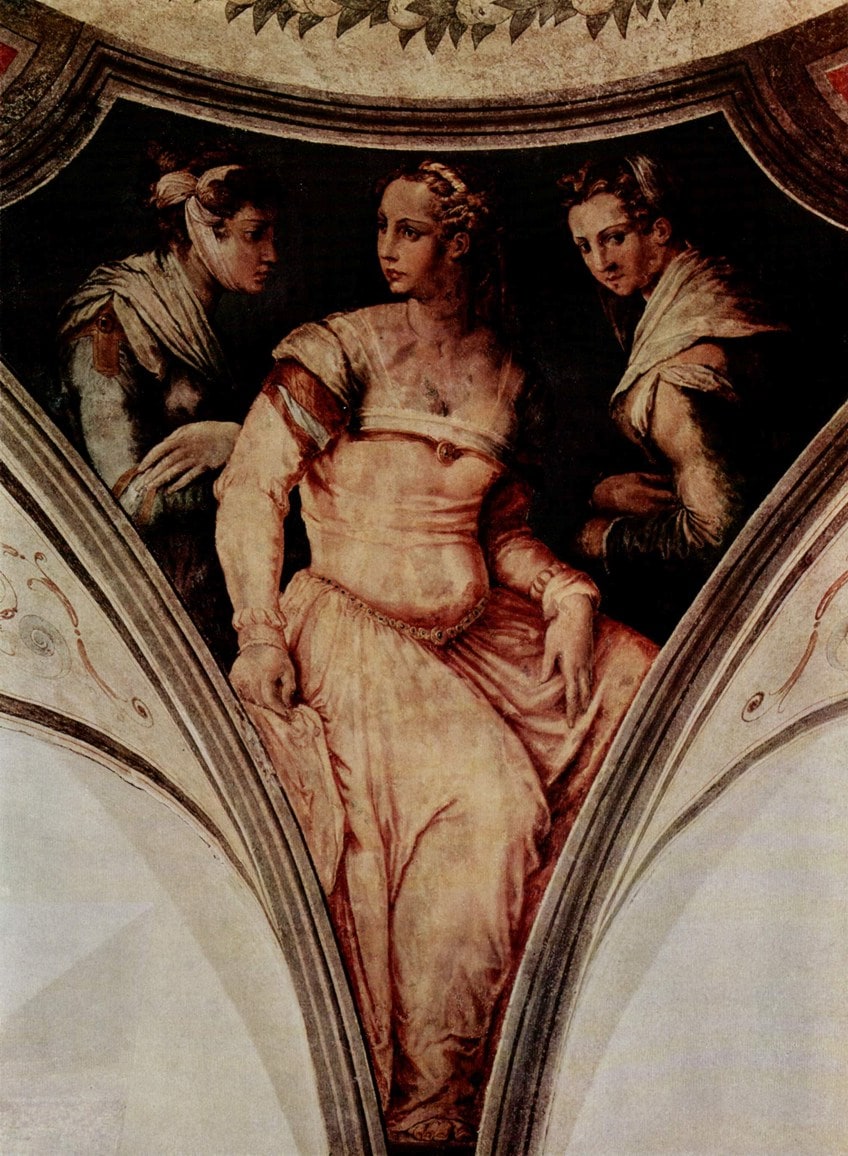
Architecture
For Vasari, architecture was a passion he began to pursue a bit later in his life. Although he had always been interested in it, he only took up formal studies in architecture in his late 20s. Whilst many of Vasari’s paintings are commended, there are a lot of people who believe that his real talent lay in architecture.
Due to his acceptance into the court of Duke Cosimo I de’Medici in 1554, he was given the chance to design and remodel a number of buildings in and around Florence.
Vasari was often employed to redesign the insides of churches in order to make them more fit for use. Due to the rising population, churches could not accommodate all of the congregation comfortably. Thus, Vasari was given the job of making sure the interiors allowed as many people to see and hear the sermon as possible. Often, he would create paintings for these churches as well.
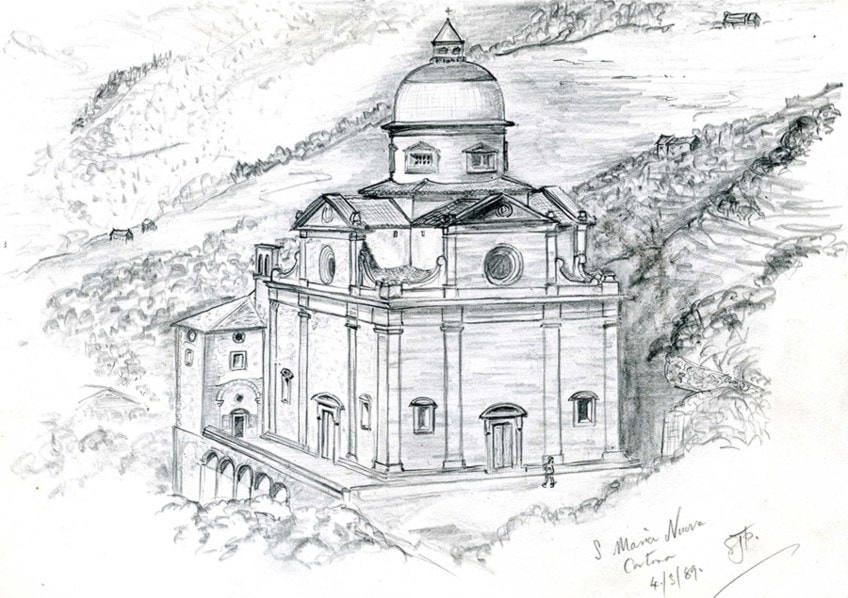
Final Years
One of Vasari’s most long-standing achievements is the role he played in the creation of the Accademia e Compagnia dell’Arte di Disegno. The Accademia, which was founded in 1563, was funded by Duke Cosimo de’Medici and overseen by Vasari. It consisted of a guild of recognized artists as well as an academy for emerging ones. The academy aimed at creating well-rounded Renaissance men who were adept at literature and science, as well as the arts.
In 1571, Vasari was given the honor of becoming a Knight of St Peter for his part in the Accademia.
At the time of his death in 1574, Vasari was working on his famous fresco The Last Judgment (c. 1579) for the roof of the Cattedrale di Santa Maria del Fiore. The fresco was given to Frederico Zuccari to finish after his death. The differences between the two artists’ work are stark, however.
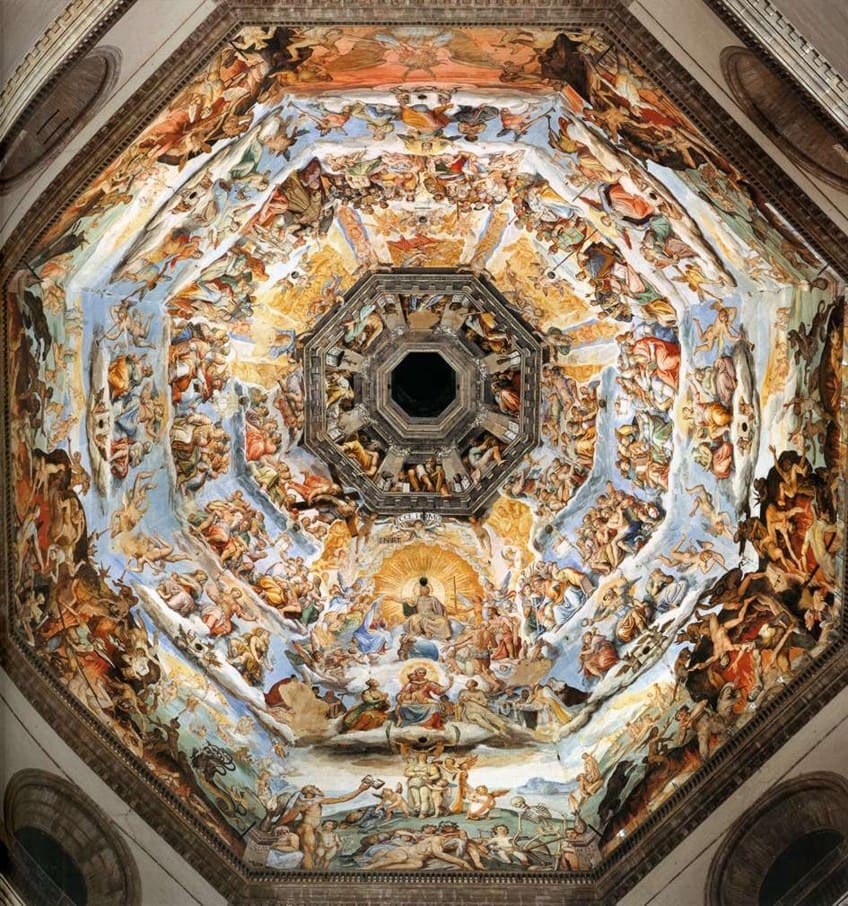
Vasari was buried in his hometown of Arezzo in a small church he had designed for his resting place. The grand home he had built for himself was turned into a museum called Casa Vasari. Casa Vasari not only houses the majority of Vasari’s paintings but also the Vasari Archive, a repository of Vasari’s writings and other Renaissance literature.
Casa Vasari is open to the public, so those visiting Tuscany are able to view his artworks up close.
Artistic Characteristics of Giorgio Vasari
Giorgio Vasari was an artist that created prolifically. Because he had an almost endless supply of commissions from the Medici family, he always had the resources to create. Therefore, he has a large body of work that art scholars can turn to for analysis.
Thus, this section will focus on some of the typical characteristics of his artworks. Namely, his Mannerist art style and heavy use of symbolism.
Mannerism
Mannerism was an art style that started during the Late Renaissance period in Italy. It was a reactionary movement to Naturalism, which was popular during the High Renaissance. It came about not through disdain for Naturalism, but rather through appreciation. Artists of the Late Renaissance were so in awe of the work done during the High Renaissance that they did not believe they could be better. Thus, they decided to be different.
One of the most obvious characteristics of Mannerism is its pursuit of hyper elegance. This can be seen through the elongation of the figure’s limbs and neck. Their features were often so refined that they appeared stylized. Figures were also contorted into highly sophisticated, yet forced poses.
Although the focus of the movement was on elegance, it was pushed to the point of eccentricity.
Naturalism used techniques such as chiaroscuro, the use of light and shadows, to create a realistic three-dimensional likeness of subjects. Whilst Mannerism also made use of chiaroscuro it used it to make dramatic contrasts rather than simply true-to-life depictions. Often, these contrasts were incorporated alongside bright, garish colors.
Vasari was an artist who used Mannerism frequently in his paintings. To see this, one can turn to paintings such as The Holy Family with Saint John (c. 1540). Vasari uses a number of Mannerist characteristics in The Holy Family with Saint John.
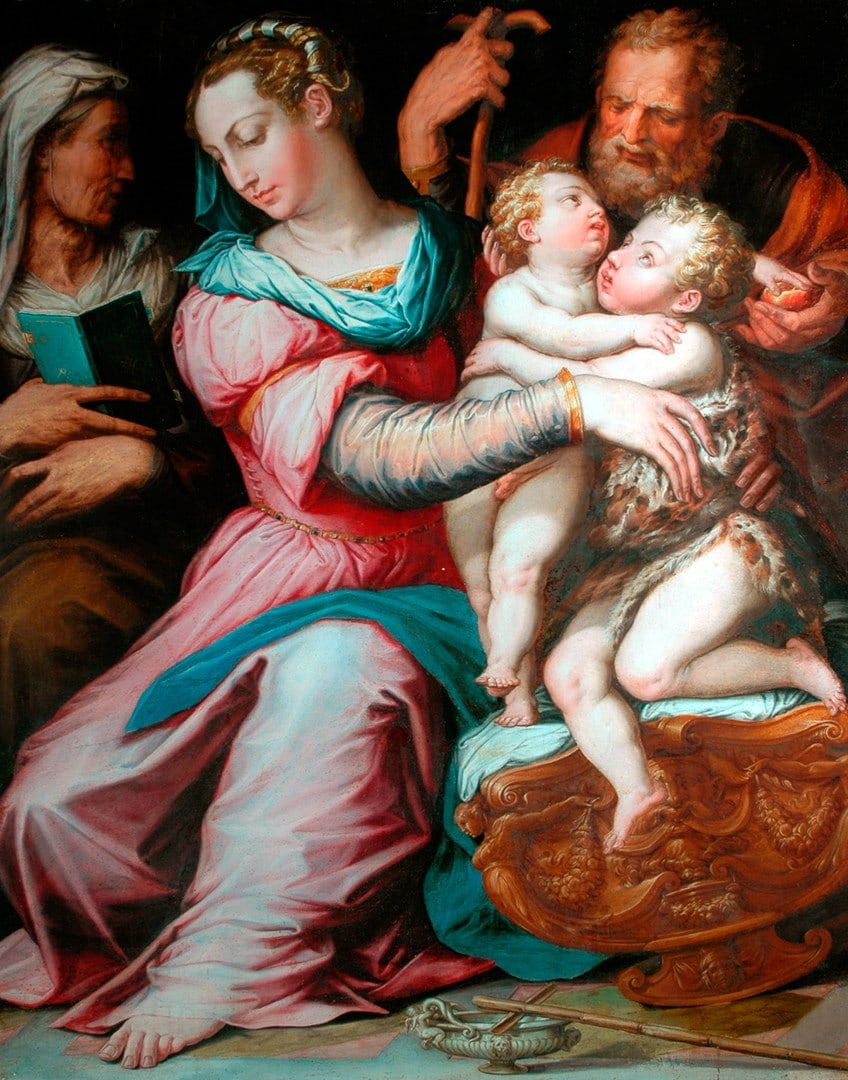
Firstly, the figures are posed in a complex, almost twisted fashion with the two infants wrapped around one another. Secondly, the colors and contrasts are stark, with a black background and bright pinks and blues as the focal point. Finally, when looking at the depiction of Mary, it is clear that her neck, and most notably her fingers, have been elongated.
Vasari’s architecture also contained elements of Mannerism. This is because he believed that one should design something that was beautiful first and practical second.
For him, the drawing and designing phase was the most important step in an architectural project. As a religious man, he believed that during this phase, God breathed creativity into you. One of his favorite Mannerist features to include his buildings was the loggia. A loggia was a room that was opened on one or more sides by grand archways. The most famous example of this is his Loggia del Pesce, which was built in 1568 in Florence.
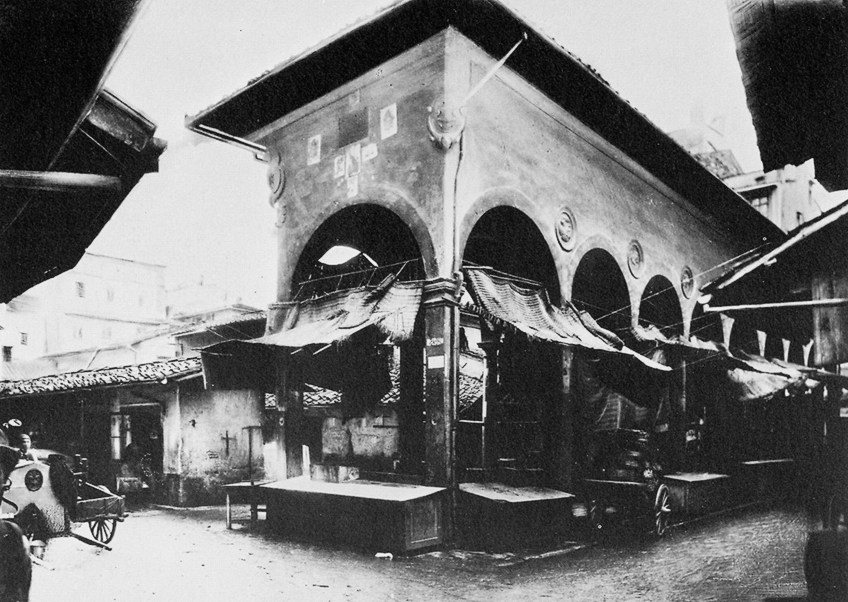
Symbolism
Giorgio Vasari was a painter who liked to embed symbolic meaning into his artworks. He was a well-read and highly educated man. Thus, his paintings often portrayed commentary and moral lessons via references to Greek and Roman antiquity. Almost every painting he ever created contained some trace of symbolism. Therefore, it would take far too long to go through them all, so this section will focus on Allegory of Justice and Truth (1543).
Allegory of Justice and Truth was commissioned for the Palazzo della Cancelleria in Rome. It is a very busy painting, which is full of symbolic meaning. The painting portrays a personification of justice and the challenges that stand in the way of it.
Firstly, the painting is centered around Justice, who is depicted as a topless woman, a nod to the women of antiquity. She has chains around her waist that attach to personifications of seven vices: Corruption, Ignorance, Cruelty, Treason, Fear, Falsehood, and Slander.
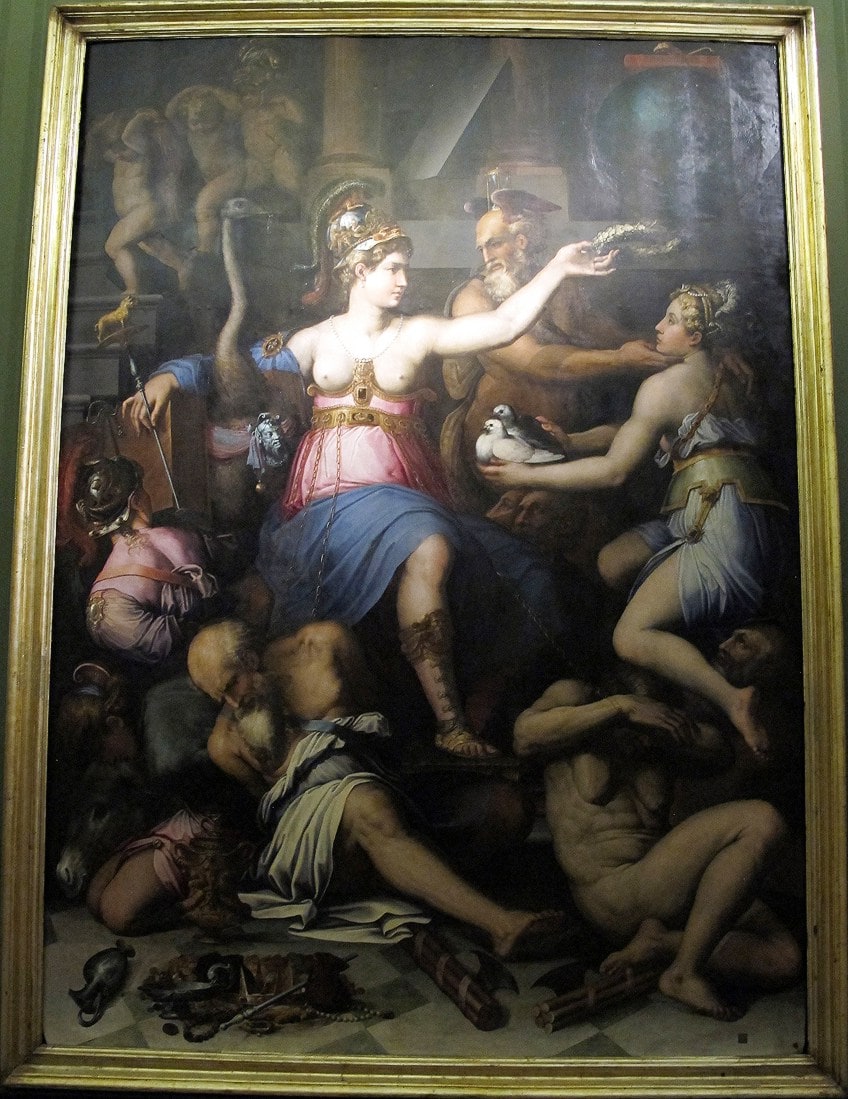
Her right arm rests on an ostrich, a symbol of patience. Justice also holds a staff that has a hippopotamus on it, which symbolizes non-bias towards friends and family. In the top left-hand corner are three armed cherubs who are there to protect Justice.
Justice is shown placing a golden laurel on the head of another woman, who is the personification of Truth. Truth cups two doves in her hands, which signify innocence. Between the two women, an older man is shown caressing Truth’s face. He represents time.
Time is portrayed with an hourglass on his head to represent that in time the truth will always be revealed. Being crushed by Truth are Falsehood and Slander.
Treason and Fear are also pictured peeping out from behind Truth’s doves. At the bottom of the painting, we see Corruption eyeing some treasure, showing that the corrupt value material gain over justice. Just above Corruption is Ignorance, who rests on the head of a donkey. Finally, Cruelty is shown with her back turned to the others, portraying her indifference to the vices hindering justice.
Casa Vasari
There are numerous art galleries where one can go view Giorgio Vasari’s paintings, although the best place to view the artist’s work is in his own home. Vasari purchased the home in 1541 while it was in the midst of being built, which gave him a lot of freedom to shape it how he wished. Once the house was completed, Vasari set to work decorating the interiors. He covered the walls of the six rooms in Tuscan-style paintings.
The house itself was a colossal artwork.
After his death, the house was inherited by members of his family. After the last member passed away the house was donated to the Fraternity of the Laity of Arezzo. However, in 1911 the Fraternity sold the house to the Italian government. They filled the house with an exhibition of Vasari’s paintings along with the works of his peers. Thus, Casa Vasari became a museum dedicated to the artist as well as other works of the Late Renaissance period.
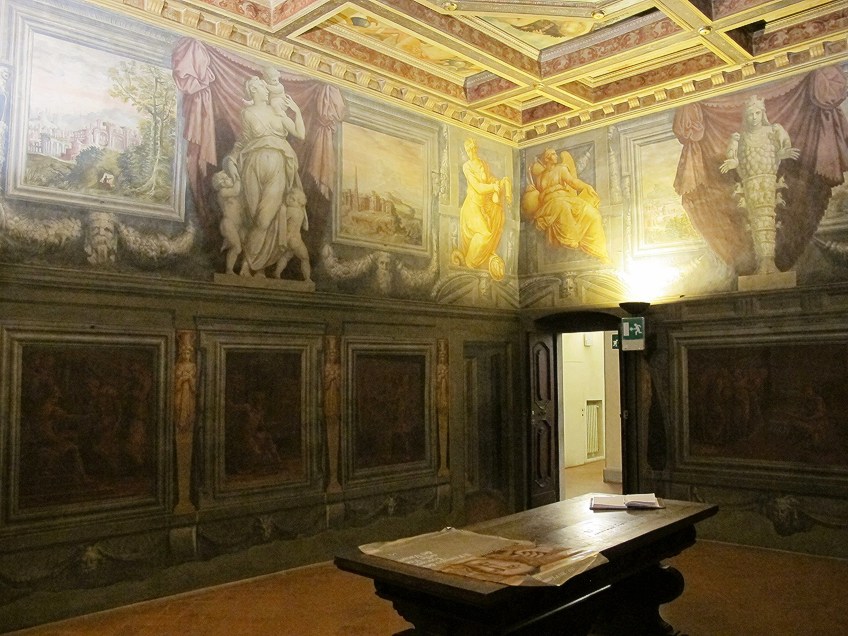
Giorgio Vasari’s Most Important Works
As mentioned above, Giorgio Vasari created art prolifically. Thus, there are a huge number of his drawings, paintings, and buildings that can still be viewed today. Although his body of work is too large to go into detail, this section will give some basic information on a number of his paintings, as well as his architectural accomplishments.
Giorgio Vasari Paintings
Vasari was constantly commissioned by the Medici family and other art patrons to create paintings for them. Whether that be portraits of family members, biblical depictions, or scenes from Roman and Greek mythology.
His prominent art style was Mannerism, which he helped popularize through his artworks.
| Title | Date | Dimensions | Medium |
| Portrait of Lorenzo the Magnificent | 1534 | 90 x 72 cm | Oil on panel |
| The Deposition | 1540 | 83 x 57 cm | Tempera on panel |
| Allegory of Justice | 1543 | 352 x 252 cm | Oil on panel |
| Six Tuscan Poets | 1544 | 132.8 x 131.1 cm | Oil on panel |
| Self Portrait | 1568 | 101 x 80 cm | Oil on canvas |
| The Last Judgement | 1579 | 4,5000 ㎠ | Fresco |
Six Tuscan Poets (1544)
Vasari was an avid believer that the Renaissance began in Tuscany. Thus, he painted Six Tuscan Poets in 1544 in order to distinguish the region as one of high intellect and culture. Each of the poets in the painting made vital contributions to Renaissance literature and the painting is Vasari’s way of paying homage to them.
The painting utilizes a Mannerist style as can be seen in through the poets’ elongated fingers and its complex composition.
The seated man in pink is the famous Florentine poet Dante Alighieri. He is best known for his Divine Comedy (1320) as well as being one of the first poets to write in Italian. Until this time, literature was typically written in Latin, but Italian was used for everyday speech. Vasari depicts Dante holding a book of poems by Virgil to show that he was fluent in Latin, yet chose to write in Italian.

Facing Dante, on his right is Guido Cavalcanti. Cavalcanti is known for his dolce stil nuovo style of writing. It is believed that he fine-tuned the love sonnet to what it is today. On Dante’s left is Giovanni Boccacio, writer of The Decameron (1353) and fellow advocate for writing in Italian rather than Latin. Next to Boccacio is Francesco Petrarca, who earned the name “The Father of Humanism”. Finally, there are Guittone d’Arezzo and Cino di Pistoia, two lesser-known Tuscan poets who helped standardize the use of Italian over Latin in literature.
Giorgio Vasari Architecture
Vasari was highly praised for his outstanding architecture. Although he began practicing architecture later in his career, he had a natural talent for it. His buildings have a beauty and artistic flair to them that was unique to the time.
A good deal of his architecture still stands today and can be seen in a number of Italian cities.
| Name | Date | Type of Structure | Place |
| Villa Giulia | 1553 | Villa | Rome, Italy |
| Vasari Corridor | 1564 | Enclosed Passageway | Florence, Italy |
| Palazzo della Carovana | 1564 | Palace | Pisa, Italy |
| Loggia del Pesce | 1568 | Loggia | Florence, Italy |
| Uffizi Gallery | 1581 | Art Museum | Florence, Italy |
| Santa Maria Nuova | 1610 | Cathedral | Cortona, Italy |
Uffizi Gallery (1580)
The Uffizi Gallery, also known as the Galleria delgi Uffizi, is situated in Florence, Italy. It is an art gallery which was designed by Vasari and comissioned by the Medici family. The Uffizi Gallery took 20 years to complete and is one of Vasari’s most impressive architectural feats.
The gallery, which is a work of art itself, is home to art belonging to the likes of Michelangelo, Da Vinci, and Botticelli.

Vasari designed the Uffizi Gallery using a Mannerist style of architecture. Mannerist architecture is defined by a juxtaposition of both elegance and jocularity. Often, elements from Classical Roman architecture are utilized, such as arches and columns. Mannerist architecture is often very ornate with a wide variety of decorative features.
The Uffizi Gallery is no exception, standing at three stories high and showcasing numerous columns, archways, and statues. The inside is just as elaborate, with painted ceilings and mosaic floors.

Book Recommendations
The above article was just a small glimpse into the life and works of the Italian painter, writer, and architect Giorgio Vasari. There is so much more that one could discover about this groundbreaking artist. Thus, listed below are a couple of book recommendations in case you would like to learn more about Vasari.
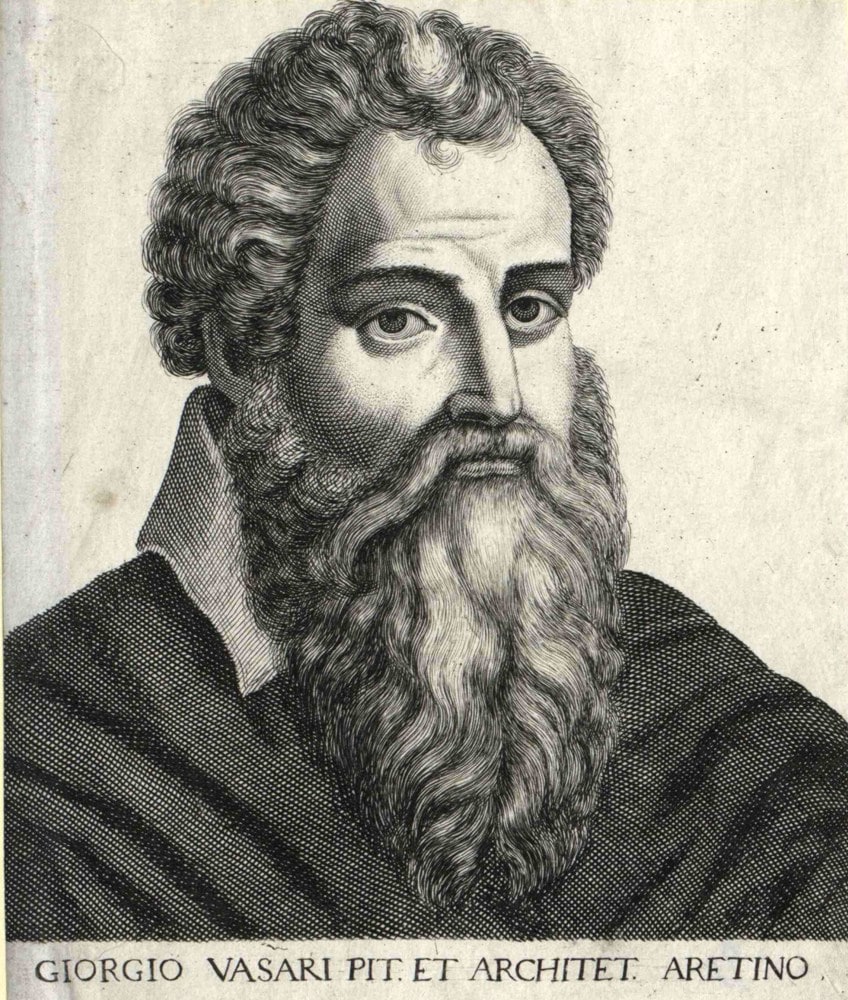
Giorgio Vasari: Architect and Courtier (1994) by Leon Satkowski
Giorgio Vasari: Architect and Courtier was published in 1994 by Princeton University Press. The book is a collaboration between author Leon Satkowski and photographer Ralph Lieberman. It analyses Vasari’s architecture in terms of its visuals as well as the political symbolism embedded in them. It also looks at collaborations between Vasari and other architects on certain projects.
The Collector of Lives: Giorgio Vasari and the Invention of Art (2018) by Noah Charney and Ingrid Rowland
The Collector of Lives: Giorgio Vasari and the Invention of Art (2018) was co-written by Noah Charney and Ingrid Rowland, and published by W. W. Norton & Company. Although it does give Giorgio Vasari’s biography it focuses more on his role as a writer of The Lives of the Most Eminent Sculptors, Painters, and Architects. The book also looks at Vasari’s legacy and the way that The Lives changed art history forever.
Giorgio Vasari was a force to be reckoned with both during and after his time. He was a skillful painter and architect and he had powerful connections that allowed him to receive many commissions. His book “The Lives of the Most Eminent Sculptors, Painters, and Architects” (1550) revolutionized the way we view artists. He made us want to know the person behind the artworks, which changed art history forever.
Take a look at our Giorgio Vasari paintings webstory here!
Frequently Asked Questions
What Was Giorgio Vasari Known For?
Giorgio Vasari was a famous writer, painter, and architect. In the modern era is most well-known for his book The Lives of the Most Eminent Sculptors, Painters, and Architects (1550), which detailed the lives of a number of Renaissance artists. The Lives is not only one of the most important works of Renaissance literature from the time, but it also changed the course of art history forever. His architecture can also still be seen all over Florence and other parts of Italy.
What Did Giorgio Vasari Believe?
Giorgio Vasari believed that in order to understand the essence of Renaissance art, one had to understand its artists. Many of the artists from the Renaissance were so much more than simply artists. They were highly educated men of science. Vasari thought it was important that artists be well-rounded. Thus, he played a vital role in the creation of the Accademia e Compagnia dell’Arte di Disegno. Young artists who studied at the Accademia were taught about science and literature as well as art.
Was Giorgio Vasari Friends With Michelangelo?
Giorgio Vasari was a massive fan of Michelangelo. Upon first moving to Florence from his hometown of Arezzo, he was placed in Michelangelo’s workshop as an apprentice. Although he was only there for a short time, the two artists developed a mutual respect for one another. Vasari would continue to be inspired by Michelangelo throughout his career and would write about him favorably in his book, The Lives of the Most Eminent Sculptors, Painters, and Architects (1550).

Emma completed her Bachelor’s Degree in International Studies at the University of Stellenbosch. She majored in French, Political Science, and History. She graduated cum laude with a Postgraduate Diploma in Intercultural Communication. However, with all of these diverse interests, she became confused about what occupation to pursue. While exploring career options Emma interned at a nonprofit organization as a social media manager and content creator. This confirmed what she had always known deep down, that writing was her true passion.
Growing up, Emma was exposed to the world of art at an early age thanks to her artist father. As she grew older her interests in art and history collided and she spent hours pouring over artists’ biographies and books about art movements. Primitivism, Art Nouveau, and Surrealism are some of her favorite art movements. By joining the Art in Context team, she has set foot on a career path that has allowed her to explore all of her interests in a creative and dynamic way.
Learn more about the Art in Context Team.
Cite this Article
Emma, Littleton, “Giorgio Vasari – Taking a Look at the Master of Tuscan Painting.” Art in Context. July 13, 2022. URL: https://artincontext.org/giorgio-vasari/
Littleton, E. (2022, 13 July). Giorgio Vasari – Taking a Look at the Master of Tuscan Painting. Art in Context. https://artincontext.org/giorgio-vasari/
Littleton, Emma. “Giorgio Vasari – Taking a Look at the Master of Tuscan Painting.” Art in Context, July 13, 2022. https://artincontext.org/giorgio-vasari/.


